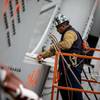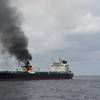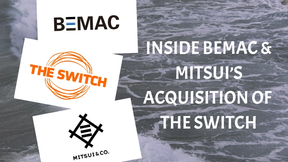"How are you doing?" When it comes to meeting international shipping regulations, this question can be hard to answer. Unless one asks and answers this question every six months, the training and certification gap quickly becomes too large to address, and the costs start to increase.
Semiannual gap analysis is essential. The ISM Code and revised STCW'95 Convention now require significantly higher levels of training and assessment for shipboard and on-shore personnel, and all must be backed up by the paperwork to prove it. But tracking these complex requirements for companies with ships sailing into international and near-coastal waters can pose heavy financial burdens to corporate operations.
"We do have an incredible explosion in training requirements, not just in the industry but internationally," says Michael Nesbitt, fleet training officer for Philadelphia-based Maritrans. "It's very much a concern."
"Training is more important than ever," says Jennifer Kelly, vice-president for government affairs, American Waterways Operators, a national trade association of tugboat, towboat and barge operators. "Both because of changing regulatory requirements and the Responsible Carrier Program as well as increased international agreements."
It's not enough to leave training updates in the hands of the individual mariner. True, his or her employment status is at stake; but the costs to the company as a whole have much further reaching implications. Companies comply to the best of their ability, but their efforts fall short of a full understanding of what to enforce and how to enforce it.
In short, as an industry, we are scrambling, hoping against hope we will simply fall through the regulatory cracks.
Safety and pollution control requirements extend to the equipment on board as well.
"Before new ships load passengers for the first time," explains USCG Rear Admiral Joel Sipes (Ret.), a cruise vessels expert, "the ship and its crew undergo exhaustive examination, including a test of crew competency. Once in service, the ship is inspected again and again every year, including a less rigorous survey every three months."
Ships failing these reviews cost their companies money. Detention overseas can result in time delays and the financial penalties incurred when certification and training are out of date are also expensive.
When a claim arises, "an investigation is required to substantiate it and establish the severity of the violation," Sipes says. "Royal Caribbean Cruise Lines Ltd., for example, recently paid a severe penalty for violating pollution laws. And then there is the corporate embarrassment that resulted."
Still, ensuring each and every mariner in an organization meets all regulatory standards can seem like a gargantuan task. What mechanisms are in place to remind both mariners and management that updates are due? And how can companies take a proactive, rather than reactive approach to this type of recordkeeping?
"There are standards for all types of ships, including passenger vessels, oil tankers, chemical tankers, cargo ships, fishing vessels, and others," Sipes says. "And the regulatory work is ongoing."
Regulations for U.S. and international ships "have become harmonized over the years," he adds, "so they provide an equivalent level of safety and pollution prevention for both foreign and U.S. flag vessels operating from U.S. ports."
Some vessels may be exempt, but it is crucial to realize STCW sets a clear precedent, which may create a liability for a company. It is in each company's best interest to model its own quality standards after those already in existence.
As a self-proclaimed industry watchdog, I anticipate the day when liability issues for our industry will follow the Occupational Safety and Health Administration model: If standards exist, and a company knowingly fails to meet them, that company may be liable for an employee's injury, whether it is legally required to meet those standards or not. Ethical issues aside, the punitive damages could be severe.
So there is a cost to doing nothing. But the cost of doing something can seem even more staggering. As the web of regulations grows ever more complex, personnel managers find themselves unable to keep up. Misinformation abounds. And unless gap analysis occurs every six months, a company may find it impossible to correct the compliance deficits it eventually uncovers.
Hiring a crew management firm is the quickest way to get up to speed. Crew management firms such as the Seafarers Employment Association are becoming more prevalent throughout the world. Mariners who have found they cannot rely on their union to keep them up-to-date are discovering membership in a crew management organization is an excellent career move.
Poised to compete with traditional union-managed labor pools, crew management organizations create a complementary relationship between their mariner members and the companies they serve, providing such benefits as training discounts and pension and insurance plans.
Another effective option is enrollment in a cooperative education program such as the Maritime Education and Training Cooperative. METCo-Op monitors its corporate members' training programs and progress on an individual basis, ensuring each participating mariner has all required certificates and training in order. And as part of the cooperative, members have a say in what courses are offered and how future programs develop.
Cost savings aside, cooperative training programs can offer benefits reaching beyond the bottom line. Many consider it vital for companies to select a program providing a strong character foundation in leadership, personal responsibility and ethics ? a solid foundation on which to build a superior work force, and the basis for the kind of teamwork that can transform an organization and the industry
From a cost perspective, a software program providing an electronic recordkeeping and tickler system may make the most sense for most companies. The Center for Maritime Leadership, Inc., has developed software allowing human resource managers to access data with the simple click of a mouse. Its Internet-based data repository is password-protected to ensure confidentiality, yet allows port states easy access, preventing unnecessary detention. In seconds, questions are cleared up, mariners and their supervisors reminded of necessary updates, and risk disappears.
The challenges are these: To ensure all mariners are properly certified and have appropriate training; to verify they are certified for the various operations performed on the vessel in question.
As we chart our course toward the future, the maritime industry must find new alternatives to meet evolving regulatory requirements in ways not only cost-effective for the employer, but empowering to the mariner.
Effective gap analysis and proactive recordkeeping are worthwhile retention tools improving morale even as they maintain a superior maritime workforce.
Sponsored Content
GLO Marine: Acting as a Vessel Upgrade Department in the hybridization of the MV Mygan.
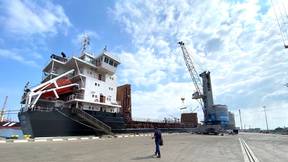
Avid Controls Pledges Lifetime Support for MV3000 Line
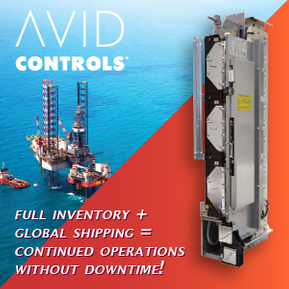
Subscribe for
Maritime Reporter E-News
Maritime Reporter E-News is the maritime industry's largest circulation and most authoritative ENews Service, delivered to your Email five times per week



